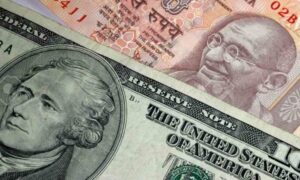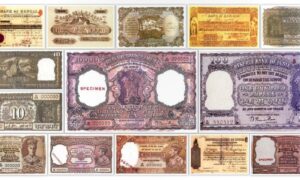The value of 1 USD to INR in 1947 is not just a number; it’s a snapshot of India’s economic history at the dawn of independence. Understanding this exchange rate sheds light on the country’s financial foundation and its early struggles in a globalized economy. In this article, we’ll explore the historical significance of this figure, how it was determined, and what it tells us about India’s economic landscape in 1947.
1. Summary overview
In 1947, when India gained independence, the exchange rate was 1 USD equivalent to ₹3.30. However, over time, the Indian rupee has experienced a continuous depreciation against the USD. As of November 19, 2024, this exchange rate had risen to ₹84.41 per USD, marking a period of significant volatility in the country’s monetary system.
Between 1949 and 1966, India adopted a fixed exchange rate system with a rate of 1 USD = ₹4.76. Under this regime, the exchange rate did not fully reflect the true strength of the rupee but was largely maintained based on government policy decisions, although economic factors such as supply and demand occasionally influenced adjustments.

From the mid-1960s to the early 1970s, the USD/INR exchange rate saw significant fluctuations. By 1966, the rate had risen to ₹7.50 per USD, with subsequent changes occurring at ₹8.39 in 1975, ₹6.61 in 1980, ₹12.38 in 1985, and ₹17.01 in 1990.
India continued to maintain a fixed exchange rate policy until 1993 when the country transitioned to a floating exchange rate system, allowing the market to determine the value of the rupee. This marked a pivotal moment in India’s monetary policy, ushering in a new era of economic and financial development.
By January 2024, the USD/INR rate had risen to ₹83.66, and by November of the same year, the rupee had depreciated to its lowest historical level at ₹84.45 per USD. This decline reflects not only global economic fluctuations but also poses a challenge to the Indian economy amid increasingly intense international competition.
2. Fluctuations in the USD/INR Exchange Rate: A Long Journey from 1947 to 2024
From 1947 to 2024, the USD/INR exchange rate has undergone significant changes, reflecting the economic fluctuations of both India and the world. Below is a table summarizing the USD/INR exchange rate by year, providing a clearer picture of this shift over the decades:
|
Year |
USD/INR Exchange Rate |
|
1947 |
3.3 |
|
1949 |
4.76 |
|
1966 |
7.5 |
|
1975 |
8.39 |
|
1980 |
7.86 |
|
1985 |
12.38 |
|
1990 |
17.01 |
|
1995 |
32.42 |
|
2000 |
43.5 |
|
2005 |
43.47 |
|
2010 |
46.21 |
|
2013 |
54.73 |
|
2014 |
60.95 |
|
2015 |
62.3 |
|
2017 |
65.04 |
|
2018 |
74 |
|
2020 |
73.78 |
|
2022 |
77.49 |
|
2023 |
82.73 |
|
2024 |
84.41 |
From the chart, we can clearly observe the depreciation of the Indian rupee against the USD over the years. However, this fluctuation is not solely due to internal factors within the Indian economy; it has also been influenced by global factors. Notably, the USD itself has also faced significant inflation during this period. Data from Trading Economics indicates that from 1947 to 2024, the cumulative inflation rate of the USD reached 3088.5%. This means that an item costing 1 USD in 1947 would cost nearly 32 USD today.
These fluctuations not only reflect changes in the value of the rupee but also serve as evidence of the major economic transformations that the world has undergone over the past 80 years.
3. Key milestones in the history of the Indian Rupee
Since India’s independence in 1947, the rupee has undergone several important developments. Below are some notable milestones in the history of this currency:
1950s: Adoption of the Decimal System
In the 1950s, India took a significant step by switching to a decimal system for the rupee. Prior to this, the rupee could be divided into 16 annas, 96 paisa, or 64 pice. However, after adopting the decimal system, 1 rupee was divided into 100 paisa, simplifying transactions and boosting economic growth.
1966: Economic Crisis
1966 was a difficult year for India, as the country faced numerous negative impacts. The Indo-Pakistan war, a decline in foreign aid, and a severe drought at the end of the 1960s caused the rupee to devalue sharply. This economic crisis vividly reflected the challenges India faced during this period.

1991: Economic Crisis and Rupee Devaluation
The early 1990s saw India struggling with severe inflation and budget deficits. Along with a critical foreign exchange shortage, the Indian government was forced to implement a devaluation of the rupee in 1991. Notably, in 1993, the fixed exchange rate system was abandoned in favor of a floating exchange rate regime.
2000s: Revaluation and Investment Boom
At the turn of the 21st century, rapid growth in the technology and services sectors attracted large foreign investments, stabilizing and strengthening the rupee. However, the 2008 global financial crisis caused many investors to withdraw funds, reversing this positive trend and once again putting downward pressure on the rupee.
2016: Cash Ban and Issuance of New Currency
One of the significant events in the history of the rupee was the Indian government’s decision in 2016 to demonetize ₹500 and ₹1,000 notes from the Mahatma Gandhi series. This move aimed to combat corruption and counterfeit currency, followed by the issuance of new ₹500 and ₹2,000 notes.
2020s: Digital Rupee and Economic Expansion
With rapid technological advancements, India has taken the lead in developing a digital rupee (eRupee) through the central bank’s initiatives. The digital rupee not only opens a new era in payments but also helps stimulate economic development, strengthens India’s position internationally, and creates a more transparent and efficient financial environment.
Throughout various historical periods, the rupee has not only mirrored changes in India’s economy but has also played a crucial role in the nation’s development strategy. These milestones are not just marks of the past but also provide a solid foundation for the future of the world’s fifth-largest economy.
4. INR/USD exchange rate: Trends and future forecast
Over the past five years, the Indian Rupee (INR) has shown a consistent downward trend against the USD. Although there have been signs of resistance around the ₹83 mark, the exchange rate surpassed this threshold and reached ₹84 in October 2024. Over the past year, the INR/USD exchange rate has fluctuated between ₹83.20 and ₹84.45, reflecting strong volatility but still an inevitable weakening of the rupee.

According to forecasts from CoinCodex’s algorithm, the rupee’s depreciation against the USD may continue in the near future. Global economic factors, along with India’s internal financial conditions, will continue to influence this volatility, meaning the short-term outlook for the rupee remains somewhat pessimistic.
In this context, investors and financial experts will need to closely monitor factors affecting the exchange rate, from India’s monetary policy to global economic conditions, in order to make informed forecasts and decisions in the near term.
5. The Indian Rupee’s Significant Depreciation Against the USD Since 1947
Since 1947, when the exchange rate of the USD to the Indian Rupee was just ₹3.30, there has been a clear and significant depreciation of the rupee over the decades. Notably, by the end of 2024, the rupee reached its lowest point in history against the USD, indicating a continued weakening trend for the currency.
However, this trend is not necessarily permanent and could change in the future, especially as India continues to experience strong economic growth. Therefore, for those interested in the foreign exchange market, seizing trading opportunities before a trend reversal could be a wise strategy. To begin, investors may refer to a list of reputable forex demo accounts to equip themselves with knowledge and experience before engaging in the real market.
The exchange rate of 1 USD to INR in 1947 reflects more than monetary value—it symbolizes a pivotal moment in India’s journey toward economic sovereignty. By examining this historical benchmark, we gain a deeper appreciation of the challenges and opportunities that shaped India’s post-independence economy. History often holds valuable lessons for the future, and this is no exception.













